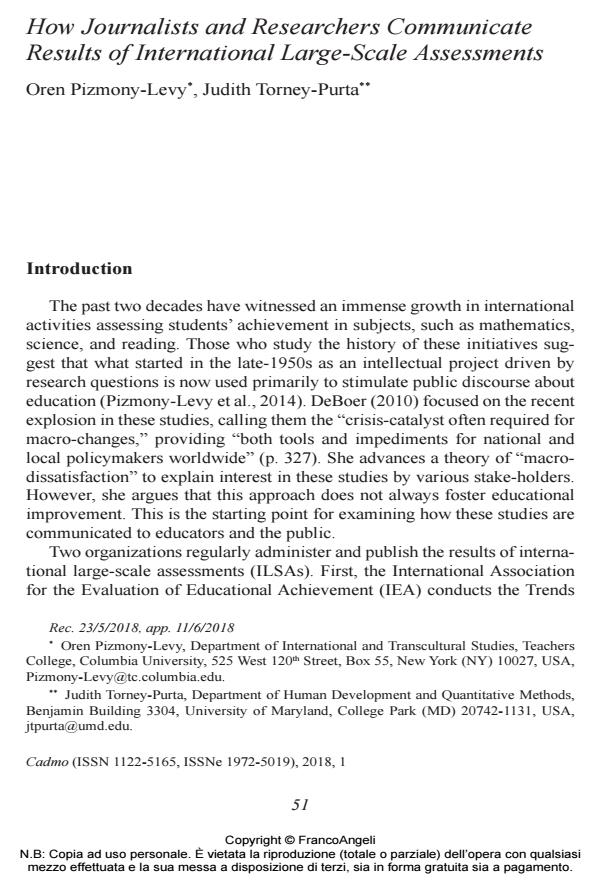How Journalists and Researchers Communicate Results of International Large-Scale Assessments
Titolo Rivista CADMO
Autori/Curatori Oren Pizmony-Levy, Judith Torney-Purta
Anno di pubblicazione 2018 Fascicolo 2018/1
Lingua Inglese Numero pagine 15 P. 51-65 Dimensione file 177 KB
DOI 10.3280/CAD2018-001007
Il DOI è il codice a barre della proprietà intellettuale: per saperne di più
clicca qui
Qui sotto puoi vedere in anteprima la prima pagina di questo articolo.
Se questo articolo ti interessa, lo puoi acquistare (e scaricare in formato pdf) seguendo le facili indicazioni per acquistare il download credit. Acquista Download Credits per scaricare questo Articolo in formato PDF

FrancoAngeli è membro della Publishers International Linking Association, Inc (PILA)associazione indipendente e non profit per facilitare (attraverso i servizi tecnologici implementati da CrossRef.org) l’accesso degli studiosi ai contenuti digitali nelle pubblicazioni professionali e scientifiche
Organizations conducting international large-scale assessments (ILSAs), such as PISA and TIMSS, rely on the media to disseminate the results. Ex¬amination of the nature of media coverage of ILSAs is limited, however. The paper presents a multi-country analysis of media coverage of OECD-PISA 2012. Using a standardized protocol and samples of news articles from 20 countries, we show how newspapers reduce the complexity of ILSAs into a simple story of international competition. The paper also documents that the findings in subject areas such as the IEA’s civic education studies rarely receive attention from journalists. These studies rely on the initial reports and also on secondary analysis of their data disseminated through channels such as scholarly journal articles. We consider the balance between these approaches as ways to engage the public, educators and education policy makers using the concept of communities of practice.
Parole chiave:International assessments; education journalists; mathematics education; science education; civic education; IEA; OECD.
- Local meanings of international student assessments: an analysis of media discourses of PISA in China, 2010-2016 Zi Hu, in Compare: A Journal of Comparative and International Education /2022 pp.419
DOI: 10.1080/03057925.2020.1775553 - The Opt-Out Movement and the Reform Agenda in U.S. Schools Oren Pizmony-Levy, Bob Lingard, David Hursh, in Teachers College Record: The Voice of Scholarship in Education /2021 pp.1
DOI: 10.1177/016146812112300501 - The perceived quality, fairness of and corruption in education in Europe Bram Spruyt, Filip Van Droogenbroeck, Leandros Kavadias, in Oxford Review of Education /2024 pp.272
DOI: 10.1080/03054985.2022.2136152 - Differenze di genere e misconcezioni nell'operare con le percentuali: evidenze dalle prove INVALSI Chiara Giberti, in CADMO 2/2019 pp.97
DOI: 10.3280/CAD2018-002007
Oren Pizmony-Levy, Judith Torney-Purta, How Journalists and Researchers Communicate Results of International Large-Scale Assessments in "CADMO" 1/2018, pp 51-65, DOI: 10.3280/CAD2018-001007